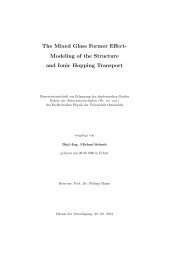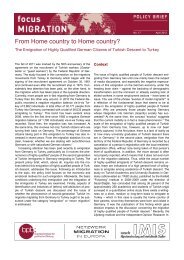362 Literatur STREINER, D. L. (2003). Diagnosing tests: Using and misusing diagnostic and screening tests. Journal of Personality Assessment, 81(3), 209-219. STROOP, J. R. (1935). Studies of interference in serial verbal reactions. Journal of Experimental Psychology, 18(6), 643- 662. STUSS, D. T. & LEVINE, B. (2002). Adult clinical neuropsychology: Lessons from studies of the frontal lobes. Annual Review of Psychology, 53(1), 401-433. STUSS, D. T., LEVINE, B., ALEXANDER, M. P., HONG, J., PALUMBO, C., HAMER, L., MURPHY, K. J. & IZUKAWA, D. (2000). Wisconsin Card Sorting Test performance in patients with focal frontal and posterior brain damage: Effects of lesion location and test structure on separable cognitive processes. Neuropsychologia, 38(4), 388-402. SU, C.-Y., LIN, Y.-H., KWAN, A.-L. & GUO, N.-W. (2008). Construct validity of the Wisconsin Card Sorting Test-64 in patients with stroke. Clinical Neuropsychologist, 22(2), 273-287. SUBOTNIK, K. L., NUECHTERLEIN, K. H., IRZHEVSKY, V., KITCHEN, C. M., WOO, S. M. & MINTZ, J. (2005). Is unawareness of psychotic disorder a neurocognitive or psychological defensiveness problem? Schizophrenia Research, 75(2-3), 147- 157. SÜLLWOLD, L. & HUBER, G. (1986). Schizophrene Basisstörungen. Berlin: Springer. SULLIVAN, E. V., MATHALON, D. H., ZIPURSKY, R. B., KERSTEEN-TUCKER, Z., KNIGHT, R. T. & PFEFFERBAUM, A. (1993). Factors of the Wisconsin Card Sorting Test as measures of frontal-lobe function in schizophrenia and in chronic alcoholism. Psychiatry Research, 46(2), 175-199. SULS, J. & FLETCHER, B. (1985). The relative efficacy of avoidant and nonavoidant coping strategies: A meta-analysis. Health Psychology, 4(3), 249-288. SUMMERFELT, A. T., ALPHS, L. D., WAGMAN, A. M. I., FUNDERBURK, F. R., HIERHOLZER, R. M. & STRAUSS, M. E. (1991). Reduction of perseverative error in patients with schizophrenia using monetary feedback. Journal of Abnormal Psychology, 100(4), 613-616. SUMMERFIELD, J., Hassabis, D., & Maguire, E. (2009). Cortical midline involvement in autobiographical memory. NeuroImage, 44(3), 1188-1200. SWEENEY, J. A., KEILP, J. G., HAAS, G. L., HILL, J. & WEIDEN, P. J. (1991). Relationships between medication treatments and neuropsychological test performance in schizophrenia. Psychiatry Research, 37(3), 297-308. SZÖKE, A., TRANDAFIR, A., DUPONT, M.-E., SCHÜRHOFF, F., LEBOYER, M. & MÉARY, A. (2008). Longitudinal studies of cognition in schizophrenia: Meta-analysis. British Journal of Psychiatry, 192(4), 248-257. TAIT, L., BIRCHWOOD, M. & TROWER, P. (2003). Predicting engagement with services for psychosis: Insight, symptoms and recovery style. British Journal of Psychiatry, 182(2), 123-128. TAIT, L., BIRCHWOOD, M. & TROWER, P. (2004). Adapting to the challenge of psychosis: Personal resilience and the use of sealing-over (avoidant) coping strategies. British Journal of Psychiatry, 185(5), 410-415. TANDON, R., NASRALLAH, H. A. & KESHAVAN, M. S. (2009). Schizophrenia, “just the facts” 4. Clinical features and conceptualization. Schizophrenia Research, 110(1-3), 1-23. TARRIER, N., KHAN, S., CATER, J. & PICKEN, A. (2007). The subjective consequences of suffering a first episode psychosis: Trauma and suicide behaviour. Social Psychiatry and Psychiatric Epidemiology, 42(1), 29-35. TATE, R. L., PERDICES, M. & MAGGIOTTO, S. (1998). Stability of the Wisconsin Card Sorting Test and the determination of reliability of change in scores. Clinical Neuropsychologist, 12(3), 348-357. TAYLOR, S. E. & BROWN, J. D. (1988). Illusion and well-being: A social psychological perspective on mental health. Psychological Bulletin, 103(2), 193-210. TAYLOR, K. E. & PERKINS, R. E. (1991). Identity and coping with mental illness in long-stay psychiatric rehabilitation. British Journal of Clinical Psychology, 30(1), 73-85. TEMKIN, N. R., HEATON, R. K., GRANT, I. & DIKMEN, S. S. (1999). Detecting significant change in neuropsychological test performance: A comparison of four models. Journal of the International Neuropsychological Society, 5(4), 357- 369. TERRACE, H. S. (1963). Errorless discrimination learning in the pigeon: Effects of chlorpromazine and imipramine. Science, 140(3564), 318-319. THOMPSON, K. N., MCGORRY, P. D. & HARRIGAN, S. M. (2001). Reduced awareness of illness in first-episode psychosis. Comprehensive Psychiatry, 42(6), 498-503. THOMPSON, K. N., MCGORRY, P. D. & HARRIGAN, S. M. (2003). Recovery style and outcome in first-episode psychosis. Schizophrenia Research, 62(1-2), 31-36. THOMPSON, R. W., RUMA, P. R., BREWSTER, A. L., BESETSNEY, L. K. & BURKE, R. V. (1997). Evaluation of an Air Force child physical abuse prevention project using the reliable change index. Journal of Child and Family Studies, 6(4), 421- 434. THORBURN, W. M. (1918). The myth of Occam’s razor. Mind, 27(3), 345-353. TODD, M., TENNEN, H., CARNEY, M. A., ARMELI, S. & AFFLECK, G. (2004). Do We Know How We Cope? Relating daily coping reports to global and time-limited retrospective assessments. Journal of Personality and Social Psychology, 86(2), 310-319. TORREY, E. R. (2002). Studies of individuals with schizophrenia never treated with antipsychotic medications: A review. Schizophrenia Research, 58(2-3), 101-115. TRANULIS, C., CORIN, E. & KIRMAYER, L. J. (2008). Insight and psychosis: Comparing the perspectives of patient, entourage and clinician. International Journal of Social Psychiatry, 54(3), 225-241.
363 Literatur TRANULIS, C., LEPAGE, M. & MALLA, A. (2008). Insight in first episode psychosis: Who is measuring what? Early Intervention in Psychiatry, 2(1), 34-41. TRAUER, T. & SACKS, T. (2000). The relationship between insight and medication adherence in severely mentally ill clients treated in the community. Acta Psychiatrica Scandinavica, 102(3), 211-216. TRÉMEAU, F., BRADY, M., SACCENTE, E., MORENO, A., EPSTEIN, H., CITROME, L., MALASPINA, D. & JAVITT, D. (2008). Loss aversion in schizophrenia. Schizophrenia Research, 103(1-3), 121-128. TRUNGOLD, S. (2000). Reality monitoring and its relation to positive symptoms and insight in schizophrenia-spectrum. disorders. Dissertation Abstracts International, 61(4-B), 2225. TSANG, H. W. H., FUNG, K. M. T. & CORRIGAN, P. W. (2006). Psychosocial treatment compliance scale for people with psychotic disorders. Australian and New Zealand Journal of Psychiatry, 40(6-7), 561-569. TURKINGTON, D., KINGDON, D. & WEIDEN, P. J. (2006). Cognitive Behavior Therapy for Schizophrenia. American Journal of Psychiatry, 163(3), 365-373. TURVEY, C. & SALOVEY, P. (1993). Measures of repression: Converging on the same construct? Imagination, Cognition and Personality, 13, 279–289. UHLHAAS, P. J. & MISHARA, A. L. (2007). Perceptual anomalies in schizophrenia: Integrating phenomenology and cognitive neuroscience. Schizophrenia Bulletin, 33(1), 142-156. UHLHAAS, P. J. & SILVERSTEIN, S. M. (2005). Perceptual organization in schizophrenia spectrum disorders: Empirical research and theoretical implications. Psychological Bulletin, 131(4), 618-632. UHLHORN, S. (2000). Die Erfassung der Arbeitsfähigkeit schizophrener Patienten. Unveröffentlichte Diplomarbeit, Universität Osnabrück. UPTHEGROVE, R., OYEBODE, F., GEORGE, M. & HAQUE, M. S. (2002). Insight, social knowledge and working memory in schizophrenia. Psychopathology, 35(6), 341-346. VAILLANT, G. E. (1971). Theoretical hierarchy of adaptive ego mechanisms: A 30-year follow-up of 30 men selected for psychological health. Archives of General Psychiatry, 24(2), 107-118. VAILLANT, G. E. (1977). Adaption to life: How the best and the brightest came of age. Boston: Little Brown. VAILLANT, G. E. (1998). Where do we go from here? Journal of Personality, 66(6), 1147-1157. VAILLANT, G. E., BOND, M. & VAILLANT, C. O. (1986). An empirically validated hierarchy of defense mechanisms. Archives of General Psychiatry, 43(8), 786-794. VAKIL, E. & BLACHSTEIN, H. (1997). Rey AVLT: Developmental norms for adults and the sensitivity of different memory measures to age. Clinical Neuropsychologist, 11(4), 356-369. VAN DEN BURG, W. & KINGMA, A. (1999). Performance of 225 Dutch school children on Rey's Auditory Verbal Learning Test (AVLT): Parallel test-retest reliabilities with an interval of 3 months and normative data. Archives of Clinical Neuropsychology, 14(6), 545-559. VAN DEN OORD, E. J. C. G., RUJESCU, D., ROBLES, J. R., GIEGLING, I., BIRRELL, C., BUKSZÁR, J., MURRELLE, L., MÖLLER, H.- J., MIDDLETON, L. & MUGLIA, P. (2006). Factor structure and external validity of the PANSS revisited. Schizophrenia Research, 82(2-3), 213-223. VAN DER DOES, A. W. & VAN DEN BOSCH, R. J. (1992). What determines Wisconsin Card Sorting performance in schizophrenia? Clinical Psychology Review, 12(6), 567-583. VAN DER ELST, W., VAN BOXTEL, M. P. J., VAN BREUKELEN, G. J. P. & JOLLES, J. (2005). Rey's verbal learning test: Normative data for 1855 healthy participants aged 24-81 years and the influence of age, sex, education, and mode of presentation. Journal of the International Neuropsychological Society, 11(3), 290-302. VAN DER MEER, L., COSTAFREDA, S., ALEMAN, A., & DAVID, A. (2009). Self-reflection and the brain: A theoretical review and meta-analysis of neuroimaging studies with implications for schizophrenia. Neuroscience and Biobehavioral Reviews, 34, 935-946. VAN PUTTEN, T., CRUMPTON, E. & YALE, C. (1976). Drug refusal in schizophrenia and the wish to be crazy. Archives of General Psychiatry, 33(12), Dec 1976. pp. 1443-1446. VAN SNELLENBERG, J. X., TORRES, I. J. & THORNTON, A. E. (2006). Functional neuroimaging of working memory in schizophrenia: Task performance as a moderating variable. Neuropsychology, 20(5), 497-510. VAYALAKKARA, J., DEVARAJU-BACKHAUS, S., BRADLEY, J. D. D., SIMCO, E. R. & GOLDEN, C. J. (2000). Abbreviated form of the Wisconsin Card Sort Test. International Journal of Neuroscience, 103(1-4), 131-137. VAZ, F. J., BÉJAR, A. & CASADO, M. (2002). Insight, psychopathology, and interpersonal relationships in schizophrenia. Schizophrenia Bulletin, 28(2), 311-317. VELICER, W. F. (1976). Determining the number of components from the matrix of partial correlations. Psychometrika, 41, 321-327. VELICER, W. F., EATON, C. A. & FAVA, J. L. (2000). Construct explication through factor or component analysis: A review and evaluation of alternative procedures for determining the number of factors or components. In R. D. GOFFIN & E. HELMES (Hrsg.), Problems and solutions in human assessment (S. 41-71). Boston: Kluwer. VENTURA, J., NUECHTERLEIN, K. H. & SUBOTNIK, K. L. (2002). Coping with interpersonal stressors in schizophrenia. In H. KASHIMA, I. R. H. FALOON, M. MIZUNO & M. ASAI (Hrsg.), Comprehensive treatment of schizophrenia. Linking
- Seite 1 und 2:
Krankheitseinsicht, dynamisch getes
- Seite 3 und 4:
Danksagung iii Einleitung Es wird Z
- Seite 5 und 6:
v Einleitung 5.2.3.5 Prozessorienti
- Seite 7 und 8:
vii Einleitung 12.1.3 Ergebnisse St
- Seite 9 und 10:
ix Einleitung Tabelle 45. Hauptkomp
- Seite 11 und 12:
Tabelle 1. Verzeichnis der wichtigs
- Seite 13 und 14:
Abstract xiii Einleitung Objective:
- Seite 15 und 16:
15 Einleitung Angesichts der Belieb
- Seite 17 und 18:
17 Einleitung Bewältigungsmodell v
- Seite 19 und 20:
19 Wisconsin Card Sorting Test 2001
- Seite 21 und 22:
21 Wisconsin Card Sorting Test Effe
- Seite 23 und 24:
23 Wisconsin Card Sorting Test Das
- Seite 25 und 26:
Tabelle 2. Exekutive und Arbeitsged
- Seite 27 und 28:
3.3 Durchführung und Kennwerte des
- Seite 29 und 30:
3.4 WCST-Defizite bei Schizophrenie
- Seite 31 und 32:
Tabelle 5. Konzeptuelles Schema zur
- Seite 33 und 34:
3.5.1 Attributidentifikation / Abst
- Seite 35 und 36:
35 Wisconsin Card Sorting Test oder
- Seite 37 und 38:
37 Wisconsin Card Sorting Test elem
- Seite 39 und 40:
39 Wisconsin Card Sorting Test ein
- Seite 41 und 42:
41 Wisconsin Card Sorting Test Fehl
- Seite 43 und 44:
43 Wisconsin Card Sorting Test zus
- Seite 45 und 46:
45 Wisconsin Card Sorting Test Lern
- Seite 47 und 48:
3.5.5 Orientierungsvariablen 47 Wis
- Seite 49 und 50:
49 Wisconsin Card Sorting Test zehn
- Seite 51 und 52:
51 Wisconsin Card Sorting Test Fehl
- Seite 53 und 54:
53 Wisconsin Card Sorting Test mit
- Seite 55 und 56:
55 Wisconsin Card Sorting Test PAOL
- Seite 57 und 58:
Tabelle 6. Übersicht über Studien
- Seite 59 und 60:
3.7.3 Faktorstruktur des WCST 59 Wi
- Seite 61 und 62:
Tabelle 7 (Fortsetzung). (o) (p) (q
- Seite 63 und 64:
3.8.2 Bildung 63 Wisconsin Card Sor
- Seite 65 und 66:
3.9 Der Dynamische WCST in der Schi
- Seite 67 und 68:
67 Wisconsin Card Sorting Test darg
- Seite 69 und 70:
69 Wisconsin Card Sorting Test WIED
- Seite 71 und 72:
71 Wisconsin Card Sorting Test Durc
- Seite 73 und 74:
73 Wisconsin Card Sorting Test 3.9.
- Seite 75 und 76:
75 Wisconsin Card Sorting Test WALL
- Seite 77 und 78:
4. Statistische Modelle der Veränd
- Seite 79 und 80:
79 Reliable Change Index mittleren
- Seite 81 und 82:
81 Reliable Change Index (b) x2 sol
- Seite 83 und 84:
83 Reliable Change Index (3.) regre
- Seite 85 und 86:
85 Reliable Change Index Bei einem
- Seite 87 und 88:
87 Reliable Change Index statistisc
- Seite 89 und 90:
89 Reliable Change Index der Differ
- Seite 91 und 92:
91 Reliable Change Index Patienten
- Seite 93 und 94:
93 Reliable Change Index Tabelle 8.
- Seite 95 und 96:
95 Reliable Change Index WIEDL, WIE
- Seite 97 und 98:
97 Coping und Abwehr (3.) die oftma
- Seite 99 und 100:
Darstellung der wichtigsten tiefenp
- Seite 101 und 102:
101 Coping und Abwehr unterschiedli
- Seite 103 und 104:
103 Coping und Abwehr von Bewältig
- Seite 105 und 106:
105 Coping und Abwehr bedrohliche K
- Seite 107 und 108:
107 Coping und Abwehr das Problem d
- Seite 109 und 110:
5.2.3.6 Antezedenzien von Bewertung
- Seite 111 und 112:
6. Krankheitseinsicht von Menschen
- Seite 113 und 114:
113 Krankheitseinsicht die Bedeutun
- Seite 115 und 116:
115 Krankheitseinsicht Kombination
- Seite 117 und 118:
117 Krankheitseinsicht negative Bew
- Seite 119 und 120:
119 Krankheitseinsicht Während die
- Seite 121 und 122:
121 Krankheitseinsicht WARNER, TAYL
- Seite 123 und 124:
123 Krankheitseinsicht Symptomatik
- Seite 125 und 126:
125 Krankheitseinsicht (z. B. aus d
- Seite 127 und 128:
127 Krankheitseinsicht Diesem Zweck
- Seite 129 und 130:
6.5.2 Krankheitseinsicht: Begriffsk
- Seite 131 und 132:
131 Krankheitseinsicht Der erste be
- Seite 133 und 134:
Tabelle 11. Konfigurationen von Ein
- Seite 135 und 136:
6.5.4.1 Einsichts-Interviews 135 Kr
- Seite 137 und 138:
137 Krankheitseinsicht having sympt
- Seite 139 und 140:
139 Krankheitseinsicht Self-Apprais
- Seite 141 und 142:
141 Krankheitseinsicht chronifizier
- Seite 143 und 144:
143 Krankheitseinsicht have a menta
- Seite 145 und 146:
145 Krankheitseinsicht veröffentli
- Seite 147 und 148:
147 Krankheitseinsicht werden als r
- Seite 149 und 150:
149 Krankheitseinsicht Wichtig wär
- Seite 151 und 152:
151 Krankheitseinsicht Die Befundla
- Seite 153 und 154:
Pfad b Interaktionale Konstruktion
- Seite 155 und 156:
155 Krankheitseinsicht Validierung
- Seite 157 und 158:
6.5.12 Die nosologische Hypothese:
- Seite 159 und 160:
159 Krankheitseinsicht Die Möglich
- Seite 161 und 162:
161 Krankheitseinsicht Exekutivfunk
- Seite 163 und 164:
163 Krankheitseinsicht (z. B. HILL,
- Seite 165 und 166:
165 Krankheitseinsicht Einige Autor
- Seite 167 und 168:
167 Krankheitseinsicht Fehlattribut
- Seite 169 und 170:
6.5.14 Motivationale Hypothesen: Ab
- Seite 171 und 172:
171 Krankheitseinsicht Das RS-Konze
- Seite 173 und 174:
173 Krankheitseinsicht problemzentr
- Seite 175 und 176:
175 Krankheitseinsicht ursprünglic
- Seite 177 und 178:
177 Krankheitseinsicht reduzierter
- Seite 179 und 180:
179 Krankheitseinsicht äußerst kn
- Seite 181 und 182:
Prämorbide Intelligenz Psychose- E
- Seite 183 und 184:
183 Krankheitseinsicht personen, al
- Seite 185 und 186:
6.5.16 Multifaktorielle Einsichts-M
- Seite 187 und 188:
187 Krankheitseinsicht Erkrankungsb
- Seite 189 und 190:
7. Fragestellungen und Hypothesen 1
- Seite 191 und 192:
Hypothese 2.4: Validierung anhand d
- Seite 193 und 194:
Hypothese 3.3: Einsicht und Exekuti
- Seite 195 und 196:
8. Methoden 8.1 Beschreibung der In
- Seite 197 und 198:
197 Methoden Select-by-marker-Analy
- Seite 199 und 200:
199 Methoden eine weitere, eher all
- Seite 201 und 202:
201 Methoden Obwohl ursprünglich l
- Seite 203 und 204:
203 Methoden Tabelle 15 stellt den
- Seite 205 und 206:
205 Ergebnisse Studie 1 Hälfte auc
- Seite 207 und 208:
207 Ergebnisse Studie 1 Tabelle 18.
- Seite 209 und 210:
9.4 Hauptkomponentenanalyse des WCS
- Seite 211 und 212:
10. Ergebnisse Studie 2: 211 Ergebn
- Seite 213 und 214:
213 Ergebnisse Studie 2 postakuten
- Seite 215 und 216:
215 Ergebnisse Studie 2 entspricht
- Seite 217 und 218:
217 Ergebnisse Studie 2 Verteilung
- Seite 219 und 220:
Tabelle 24. Übersicht über berech
- Seite 221 und 222:
Tabelle 26. Zehn WCST-Performanztyp
- Seite 223 und 224:
223 Ergebnisse Studie 2 Zusammenhan
- Seite 225 und 226:
10.6 Unterschiedstests und Konkorda
- Seite 227 und 228:
227 Ergebnisse Studie 2 nach LANDIS
- Seite 229 und 230:
229 Ergebnisse Studie 2 zur Decke,
- Seite 231 und 232:
10.8 Komposition von Metatypen 231
- Seite 233 und 234:
Tabelle 35. Cluster-Varianzen und F
- Seite 235 und 236:
10.8.2 Übereinstimmung von RCI-Typ
- Seite 237 und 238:
Tabelle 39. Kreuztabelle WCSTdyn-Cl
- Seite 239 und 240:
239 Ergebnisse Studie 2 Die dargest
- Seite 241 und 242:
Tabelle 42. Korrekte Sortierungen i
- Seite 243 und 244:
10.9 Soziodemographische und klinis
- Seite 245 und 246:
Tabelle 45. Rotierte Komponentenmat
- Seite 247 und 248:
10.10 Externe Validierung der Metat
- Seite 249 und 250:
249 Ergebnisse Studie 2 Es besteht
- Seite 251 und 252:
Tabelle 51. Lernverläufe der AVLT-
- Seite 253 und 254:
253 Ergebnisse Studie 2 10.10.3 Faz
- Seite 255 und 256:
255 Ergebnisse Studie 2 Angesichts
- Seite 257 und 258:
10.12 Analyse von WCST-Fehlerprofil
- Seite 259 und 260:
259 Ergebnisse Studie 2 ausschließ
- Seite 261 und 262:
261 Ergebnisse Studie 2 Die Fehler-
- Seite 263 und 264:
263 Ergebnisse Studie 3 den Zusamme
- Seite 265 und 266:
265 Ergebnisse Studie 3 übrigen It
- Seite 267 und 268:
267 Ergebnisse Studie 3 Partialkorr
- Seite 269 und 270:
Tabelle 66. Symptombewusstheit, Pos
- Seite 271 und 272:
271 Ergebnisse Studie 3 11.6 Konver
- Seite 273 und 274:
11.8 Aktive und passive Medikations
- Seite 275 und 276:
11.10 Einsicht, Exekutivfunktionen
- Seite 277 und 278:
277 Ergebnisse Studie 3 Offenheit k
- Seite 279 und 280:
279 Ergebnisse Studie 3 52 Patiente
- Seite 281 und 282:
281 Ergebnisse Studie 3 wies einen
- Seite 283 und 284:
283 Ergebnisse Studie 3 Insgesamt k
- Seite 285 und 286:
285 Ergebnisse Studie 3 Das gleiche
- Seite 287 und 288:
287 Ergebnisse Studie 3 G12 = 3,5 (
- Seite 289 und 290:
Tabelle 81. Kognition und Symptomat
- Seite 291 und 292:
291 Ergebnisse Studie 3 Aufgrund de
- Seite 293 und 294:
293 Ergebnisse Studie 3 Es ist auff
- Seite 295 und 296:
295 Ergebnisse Studie 3 Im nächste
- Seite 297 und 298:
297 Ergebnisse Studie 3 kognitiv le
- Seite 299 und 300:
299 Diskussion An einer nicht-psych
- Seite 301 und 302:
Hypothese Gegenstand Ergebnis 2.1 S
- Seite 303 und 304:
3.5 Kurvilinearer Zusammenhang (qua
- Seite 305 und 306:
12.2.2 Diskussion Studie 2: RCI-Ver
- Seite 307 und 308:
307 Diskussion Insbesondere scheint
- Seite 309 und 310:
309 Diskussion »Metatypen« zu kl
- Seite 311 und 312: 311 Diskussion Fehlertypen: Währen
- Seite 313 und 314: 313 Diskussion Funktionsbereiche (s
- Seite 315 und 316: 12.2.3.1 Diskussion der OSSTI 315 D
- Seite 317 und 318: 12.2.3.2 Einsicht und Depressivitä
- Seite 319 und 320: 12.2.3.3 Einsicht und Exekutivfunkt
- Seite 321 und 322: 321 Diskussion Arbeitsgedächtnis (
- Seite 323 und 324: 323 Diskussion zur hirnorganisch ve
- Seite 325 und 326: 12.2.3.5 Überprüfung des Einsicht
- Seite 327 und 328: 327 Diskussion sozialer Konsequenze
- Seite 329 und 330: 329 Diskussion Diagnose zurückwies
- Seite 331 und 332: 12.3 Schlusswort 331 Diskussion Die
- Seite 333 und 334: Literatur ACKERMANN, R. & DERUBEIS,
- Seite 335 und 336: 335 Literatur BAUMEISTER, R. F., DA
- Seite 337 und 338: 337 Literatur BURNS, J. W. (2000).
- Seite 339 und 340: 339 Literatur DABAN, C., AMADO, I.,
- Seite 341 und 342: 341 Literatur FERRERI, M., ROUILLON
- Seite 343 und 344: 343 Literatur GOLDMAN, R. S., AXELR
- Seite 345 und 346: 345 Literatur HAYGOOD, R. C. & BOUR
- Seite 347 und 348: JANZARIK, W. (2003). Der Psychose-B
- Seite 349 und 350: 349 Literatur KOLB, B. & WHISHAW, I
- Seite 351 und 352: 351 Literatur LYSAKER, P. H. & BELL
- Seite 353 und 354: 353 Literatur MCGUIGAN, F. J. (1974
- Seite 355 und 356: 355 Literatur NIEUWENSTEIN, M. R.,
- Seite 357 und 358: 357 Literatur PINI, S., CASSANO, G.
- Seite 359 und 360: 359 Literatur SACKEIM, H. A. & GUR,
- Seite 361: 361 Literatur SMITH, T. E., HULL, J
- Seite 365 und 366: 365 Literatur WEILER, M. A., FLEISH
- Seite 367 und 368: 367 Literatur YOUNG, D. A., ZAKZANI
- Seite 369 und 370: Perseverative Fehler Prätest .161
- Seite 371 und 372: C Einverständniserklärung 371 Anh
- Seite 373 und 374: E Fragebogen zur Behandlungseinsch
- Seite 375 und 376: F FKV-Instruktion »Trait« 375 Anh
- Seite 377 und 378: Coping Strategies Task (CST): Auswe
- Seite 379: 379 Anhang Erklärung über die Eig

















